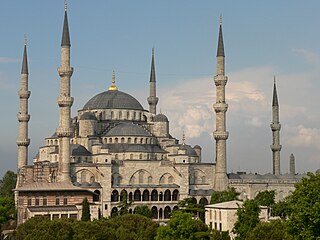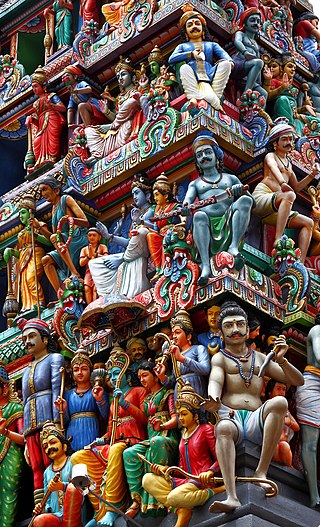ISP often refers to Internet service provider. ISP may also refer to:
A mosque, also called a masjid, is a place of worship for Muslims. The term usually refers to a covered building, but can be any place where Islamic prayers are performed, such as an outdoor courtyard.

Soad Muhammad Kamal Hosny was an Egyptian actress born in Cairo. She was known as the "Cinderella of Egyptian cinema" and one of the most influential actresses in the Middle East and the Arab world. She rose to stardom at the end of the 1950s, performing in more than 83 films between 1959 and 1991 with nine films in the greatest 100 films in the history of Egyptian cinema. A majority of her films were shot in the 1960s and 1970s. Her final screen appearance was in the 1991 film,The Shepherd and the Women, directed by her ex-husband Ali Badrakhan.
Ma, MA, or mA may refer to:

The Mosque–Cathedral of Córdoba, officially known by its ecclesiastical name of Cathedral of Our Lady of the Assumption, is the cathedral of the Roman Catholic Diocese of Córdoba dedicated to the Assumption of Mary and located in the Spanish region of Andalusia. Due to its status as a former mosque, it is also known as the Mezquita and as the Great Mosque of Córdoba.

Ottoman architecture is an architectural style or tradition that developed under the Ottoman Empire over a long period, undergoing some significant changes during its history. It first emerged in northwestern Anatolia in the late 13th century and developed from earlier Seljuk Turkish architecture, with influences from Byzantine and Iranian architecture along with other architectural traditions in the Middle East. Early Ottoman architecture experimented with multiple building types over the course of the 13th to 15th centuries, progressively evolving into the classical Ottoman style of the 16th and 17th centuries. This style was a mixture of native Turkish tradition and influences from the Hagia Sophia, resulting in monumental mosque buildings focused around a high central dome with a varying number of semi-domes. The most important architect of the classical period is Mimar Sinan, whose major works include the Şehzade Mosque, Süleymaniye Mosque, and Selimiye Mosque. The second half of the 16th century also saw the apogee of certain decorative arts, most notably in the use of Iznik tiles.

Sacral architecture is a religious architectural practice concerned with the design and construction of places of worship or sacred or intentional space, such as churches, mosques, stupas, synagogues, and temples. Many cultures devoted considerable resources to their sacred architecture and places of worship. Religious and sacred spaces are amongst the most impressive and permanent monolithic buildings created by humanity. Conversely, sacred architecture as a locale for meta-intimacy may also be non-monolithic, ephemeral and intensely private, personal and non-public.
A framework is a generic term commonly referring to an essential supporting structure which other things are built on top of.

A külliye is a complex of buildings associated with Turkish architecture centered on a mosque and managed within a single institution, often based on a waqf and composed of a madrasa, a Dar al-Shifa (clinic), kitchens, bakery, hammam, other buildings for various charitable services for the community and further annexes.
Service-oriented modeling is the discipline of modeling business and software systems, for the purpose of designing and specifying service-oriented business systems within a variety of architectural styles and paradigms, such as application architecture, service-oriented architecture, microservices, and cloud computing.

Sharjah is the third-most populous city in the United Arab Emirates, after Dubai and Abu Dhabi. It is the capital of the Emirate of Sharjah and forms part of the Dubai-Sharjah-Ajman metropolitan area.
Systems analysis and design, an interdisciplinary part of science, may refer to:

The cruciform Madrasah of the Amir Sarghatmish, built in 1356, lies to the northeast of the Mosque of Ibn Tulun, in Islamic Cairo. The building's school, mosque, and mausoleum can be seen from Ibn Tulun's spiral minaret, while its entrance is on Saliba Street. This structure includes a madrasa, mosque, and mausoleum. The madrasa is also referred to as the Mosque of Amir al-Sayf Sarghatmish.
Suad and the variants Souad, Soad, stems from the Arabic verb sa‘ada which the name means "good luck, good fortune, happiness, auspicious, prosperous, favorable". Suad is another variant from the Arabic given name Saad.
Nizamiye Masjid, often called the Nizamiye Mosque, is a mosque situated in the city of Midrand, City of Johannesburg Metropolitan Municipality, South Africa.
This page is based on this
Wikipedia article Text is available under the
CC BY-SA 4.0 license; additional terms may apply.
Images, videos and audio are available under their respective licenses.






